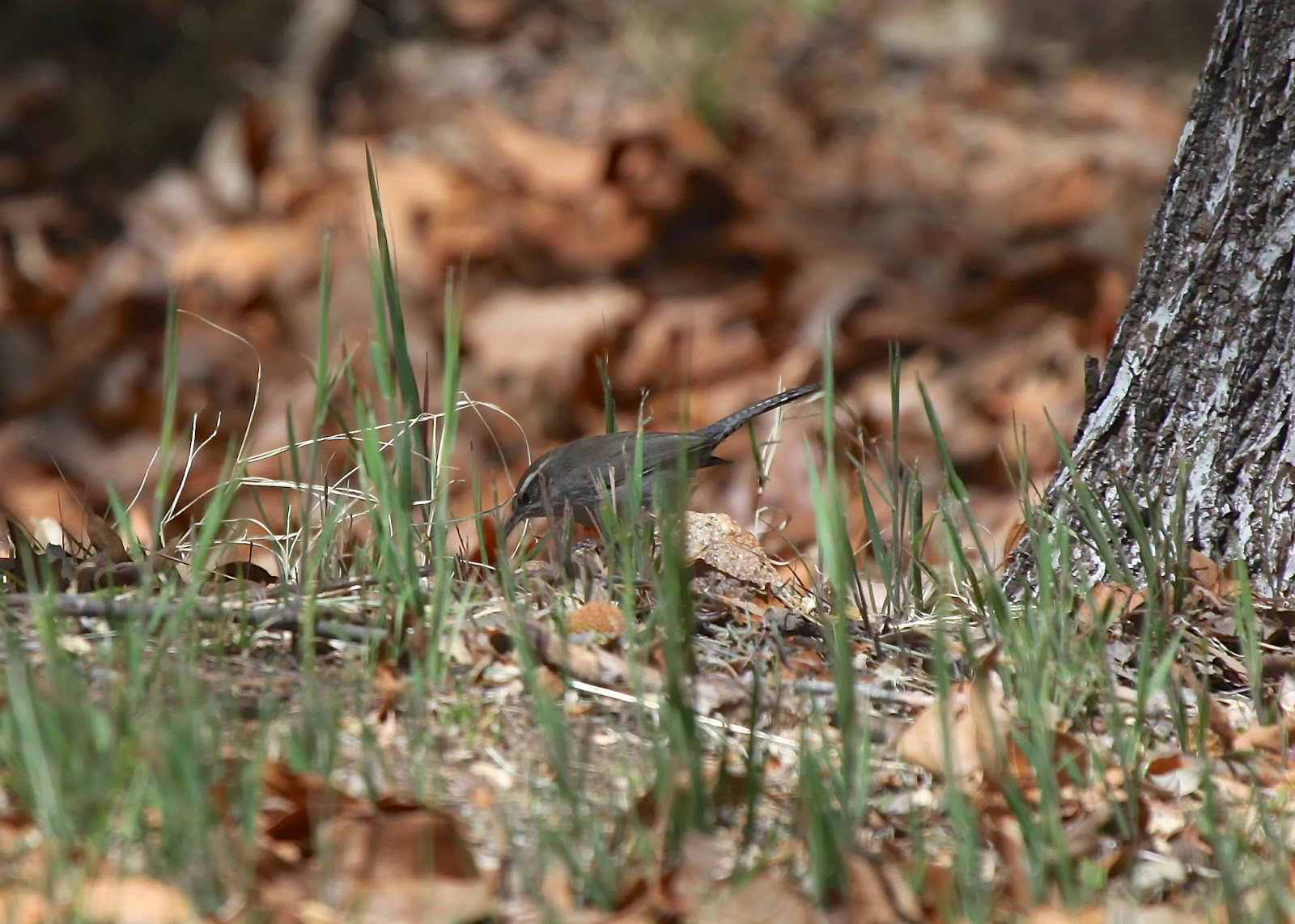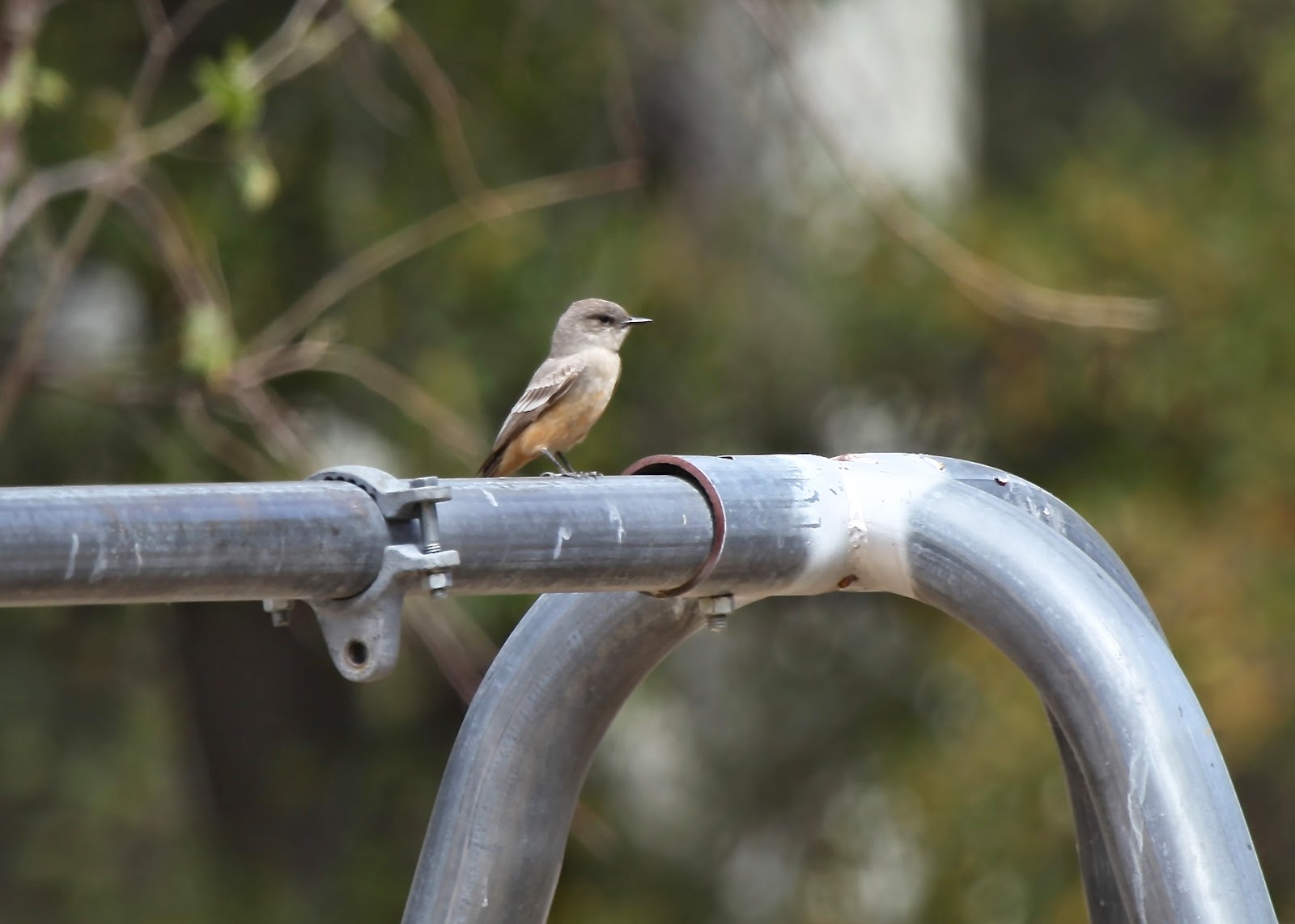Wednesday, April 30, 2014
Tuesday, April 29, 2014
Monday, April 28, 2014
Swainson's Hawk - I
Continuing with my alphabetical series on my "5" Star Photos we come to Swainson's Hawk. Swainson's Hawk is found throughout the Western United States, lower Western Canada, and Northern Mexico. This mother, father, and baby were photographed near the Florida Mountains in Southeast New Mexico:
 |
| Swainson's Hawk |
Saturday, April 26, 2014
Mount Lemmon, Red Faced Warbler
I had been up to Incinerator Ridge on Mount Lemmon several times looking for the Red Faced Warbler without luck. That's not to say I didn't find and photograph several other birds of significance (Townsend's, Wilson's, and Tennessee Warblers, Ruby Crowned Kinglets, Pygmy Nuthatch, Western Wood Peewee, and more).
But, finally on Monday, I was successful in getting the beautiful little Red Faced Warbler. Of course, after seeing the resulting photo, I realized that a flash probably would net me a photo with more detail and clarity. So, today I'm going to head back up to Incinerator Ridge and try again with the flash. Nonetheless, here's the photo I got on Monday:
But, finally on Monday, I was successful in getting the beautiful little Red Faced Warbler. Of course, after seeing the resulting photo, I realized that a flash probably would net me a photo with more detail and clarity. So, today I'm going to head back up to Incinerator Ridge and try again with the flash. Nonetheless, here's the photo I got on Monday:
 |
| Red Faced Warbler |
Labels:
Incinerator Ridge,
Mount Lemmon,
Red Faced Warbler
Monday, April 21, 2014
Saturday, April 19, 2014
Summer Tanager - Female
It's time for the Summer Tanagers to arrive in Tucson. Also time to get back to my alphabetical series of my "'5" Star Photos. And next up is the Summer Tanager, starting with a female. Summer Tanagers are a nice find. The Summer Tanager is a migratory bird, spending its summers in the Southern US, and winters in the Northern parts of South America.
While the male is easy to identify, the female Summer Tanager could easily be mistaken for a Hepatic Tanager in the Southwest where their ranges overlap.
Here, though the female Summer Tanager:
 |
| Summer Tanager - Female |
Monday, April 14, 2014
Gila Monster Time
Gila Monsters spend much of their time under ground (up to 10 months a year). So when we see one it is a treat. They are venomous so you must be careful. They are also protected by law. It is illegal to pick one up, have one as a pet, or kill one. Last week Christine and I were coming home after a hike in Saguaro National Park and found one on a back road. We stopped and I was able to get some nice photos:
Full length with tongue protruding:
 |
| Gila Monster |
 |
| Gila Monster |
 |
| Gila Monster |
Then a couple of days ago our neighbor called me because there was a Gila Monster in her kitchen. (She likes to leave the door open). So I went over to help it find the outside where he belonged. Here is a photo of the Gila Monster just after I got it out the door (with a broom):
 |
| Gila Monster |
Sunday, April 13, 2014
Saturday, April 12, 2014
Incinerator Ridge, Mount Lemmon
Yesterday, a had a couple of free hours so drove up to Incinerator Ridge on Mount Lemmon. Walking among the tall Ponderosa and Lodgepole Pines is a very quieting and renewing way to spend a few hours. And, while I was hoping to find some warblers -- olive and red faced, in particular, it was not meant to be. However, I did get some nice photos:
 |
| House Finch |
 |
| Ornate Tree Lizard |
 |
| Raven |
 |
| Yellow Eyed Junco |
 |
| White Crowned Sparrow |
Thursday, April 10, 2014
More from Huachuca Canyon. Here are some decent photos I did get:
 |
| Bewicks Wren |
 |
| Dusky Flycatcher |
 |
| Broad Billed Hummingbird |
 |
| House Finch |
 |
| Bridled Titmouse |
 |
| White Breasted Nuthatch |
 |
| Vermillion Flycatcher - Female |
 |
| Black Phoebe |
 |
| Hammond's Flycatcher |
 |
| Chipping Sparrow |
 |
| Dark Eyed Junco |
 |
| American Robin |
 |
| Lesser Goldfinch |
All in all, 39 species seen or photographed. It was a Good Day Birding.
Wednesday, April 9, 2014
Huachuca Canyon - Part II
Continuing with photos from my Birding Huachuca Canyon, photos I got but that will be trashed. Here a a few examples showing the difficulty of photographing birds in the forest. I know birders see Black Throated Gray Warblers, Bushtits, and Painted Redstarts all the time. For me, though, I want photos. Yet, these three are the only "evidence" I saw them, yet no good enough to keep them:
 |
| Black Throated Gray Warbler |
 |
| Bushtit |
 |
| Painted Redstart |
Monday, April 7, 2014
What Constitutes a Good Day Birding?
So I took a day off to "Bird" in Huachuca Canyon, Huachuca Mountains, Southern Arizona.
Being deaf in one ear, and cochlear implant in the other puts me a a bit of a disadvantage when it comes to birding. I can't identify a bird by its call, nor can I locate it (because only one ear works -- somewhat) by its sound.
So I have to rely on sight. In dense vegetation, that usually means movement. But when moving it's obviously more difficult to photograph.
Nonetheless, I have been reading about the Sinaloa Wren that has been seen in Huachuca Canyon for the last several months. So, off I went.
"Now, a few words on looking for things. When you go looking for something specific, your chances of finding it are very bad. Because of all the things in the world, you're only looking for one of them. When you go looking for anything at all, your chances of finding it are very good. Because of all the things in the world, you're sure to find some of them."
Daryl Zero, The Zero Effect
Did I find the Sinaloa Wren?? NO. I thought for a moment I did, but it was a Bewicks Wren. But, further up the canyon I found a Pacific Wren. The PW is also rare to Southern Arizona, so I was quite please with that find. The only problem was that he moved too quickly in and out of the vegetation and then gone in another minute. So no photo. I also saw but didn't get photos of a male Elegant Trogon.
So one of the keys to finding AND photographing wildlife is to put yourself in the place with the most potential. That doesn't guarantee success though. You need some luck. I've sat in spots with great potential for hours and didn't see -- or photograph so much as a LLB (little brown bird).
So one of the keys to finding AND photographing wildlife is to put yourself in the place with the most potential. That doesn't guarantee success though. You need some luck. I've sat in spots with great potential for hours and didn't see -- or photograph so much as a LLB (little brown bird).
However, toward the end of the day I found a large rock in the middle of the creek on which to sit and contemplate life's mysteries. There was some cover so I was inconspicuous. Within one minute a Swainson's Thrush came to bath; then a Yellow Rumped Warbler; then a Hepatic Tanager; then a Bullocks Oriole; then a Townsend's Warbler. All in the space of about five minutes. Both Potential and Luck.
This all happened no more than 30 feet in front of me. I expected great photos. And, while I did get some great ones I was disappointed that all the Bullock's Oriole photos were slightly out of focus:
 |
| Bullock's Oriole |
Here, though, are some of the ones that turned out well:
 |
| Hepatic Tanager |
 |
| Yellow Rumped Warbler |
 |
| Townsend's Warbler |
 |
| Swainson's Thrush |
So, by and large a GOOD DAY BIRDING!!
Tomorrow, maybe a few more photos from my trip to Huachuca Canyon.
Tomorrow, maybe a few more photos from my trip to Huachuca Canyon.
Saturday, April 5, 2014
Friday, April 4, 2014
Great Horned Owl in Eucalyptus Tree
As I have mentioned before, we have had a pair -- well, two pairs of Great Horned Owls living across the street in our neighbor's (Ursula) Eucalyptus Trees. A few days ago, one of our birding guests wanted to see them so I played birding guide. One of the adults (male) was sitting in such a nice position that I had to come back and get my camera. The GHO is so majestic looking:
 |
| Great Horned Owl |
 |
| Great Horned Owl |
Thursday, April 3, 2014
On Sunday I hiked Miller Canyon and Huachuca Canyon. Having a significant hearing impairment is clearly a handicap when birding. As a general rule I need to see movement in order to find a bird. Of course, if the bird is moving, a photograph is only going to happen if the bird doesn't fly far and lands where a photo is possible.
So although I did find many birds only these two Painted Redstarts and the Hutton's Vireo were still long enough for a photo:
So although I did find many birds only these two Painted Redstarts and the Hutton's Vireo were still long enough for a photo:
 |
| Painted Redstart |
 |
| Painted Redstart |
 |
| Hutton's Vireo |
Labels:
hutton's vireo,
Painted Redstart
Wednesday, April 2, 2014
Tanque Verde Wash -- Again
Tanque Verde Wash which is about 5 miles from us here in Tucson, is usually a productive birding spot. Of course, that doesn't necessarily it usually is a productive photo spot. Birding photography requires the willingness of the birds to be photographed. Nonetheless, as a photographer you put yourself in the place with the most potential and hope you get a bit lucky.
As Christine and I walked through Tanque Verde Wash the other day, we saw -- and heard lots of birds. But I really only came home with two photos. We came across a pair of Sharp Shinned Hawks that were parenting two young ones just out of their nest. The first photo is one of the adults.
The second photo has wonderful art-like color -- like a sketch -- although the White Crowned Sparrow is a tad out of focus.
 |
| Sharp Shinned Hawk |
 |
| White Crown Sparrow |
Labels:
sharp shinned hawk,
white crowned sparrow
Subscribe to:
Posts (Atom)






